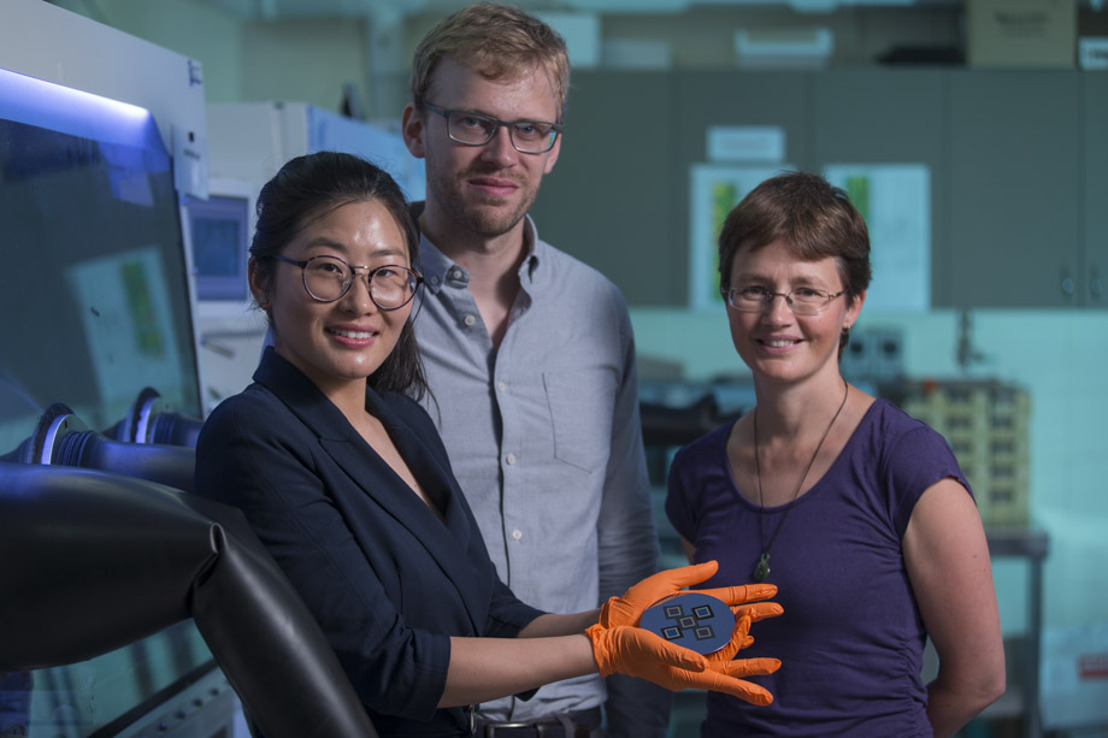The Australian National University (ANU) team, in collaboration with researchers from and the California Institute of Technology, have developed a new way to create crystalline silicon and perovskite tandem PV cells, which they claim to be the simplest method of doing so.
To combine two cells, engineers normally use an interlayer to allow electrical charge to be transferred easily between the two cells, so they can function in tandem.
According to co-author Daniel Jacobs from the ANU, this is a bit like making a club sandwich with extra bread in the middle – it plays a structural role, but the sandwich would taste better without it.
“We’ve found a new way to simply stack the two cells together so they’ll work efficiently with each other – we don’t need the interlayer, or extra bread, anymore,” Jacobs said.
The team says this minimises energy waste and simplifies the structure, making it potentially cheaper and easier to produce.
“With tandems it’s crucial to demonstrate a fabrication process that is as simple as possible, otherwise the additional complexity is not worthwhile from a cost perspective,” Jacobs said.
“Our structure involves one less fabrication step, and has benefits for performance too.”
While described as a difficult task, combining two materials in a tandem configuration paves the way to higher efficiency, far beyond those achieved by technology solely based on silicon.
“We’ve already reached 24% improvement in efficiency with this new structure, and there’s plenty of room left to grow that figure,” Jacobs said.
Earlier this year, U.K.-Germany based Oxford PV announced the achievement of 27.3% efficiency on its perovskite-silicon tandem cell, and revealed ambitions to achieve efficiencies of more than 30% in the near future.
Belgian research institute Imec has also reached an impressive efficiency on a perovskite/silicon tandem cell of 27.1%, while European solar research organization, Solliance and the Energy Research Center of the Netherlands have achieved 26.3% efficiency on a transparent perovskite solar cell combined with a crystalline silicon solar cell.
Another notable achievement in the field was made by researchers from Berlin’s Helmholtz Zentrum (HZB) Research Institute, who have improved perovskite-silicon tandem solar cell efficiency by 2.1% to 25.5%, etching the cell silicon layer on the back-side, and applying a polymer light management foil to the front-side of the device.
The ANU-led study was funded by the an Australian Renewable Energy Agency (ARENA) grant, as part of a project in collaboration with UNSW and Monash University focused on tandem solar cell development methods.
This article was amended on 2/1/2019 to reflect that Helmholtz Zentrum Berlin is abbreviated HZB.
This content is protected by copyright and may not be reused. If you want to cooperate with us and would like to reuse some of our content, please contact: editors@pv-magazine.com.









By submitting this form you agree to pv magazine using your data for the purposes of publishing your comment.
Your personal data will only be disclosed or otherwise transmitted to third parties for the purposes of spam filtering or if this is necessary for technical maintenance of the website. Any other transfer to third parties will not take place unless this is justified on the basis of applicable data protection regulations or if pv magazine is legally obliged to do so.
You may revoke this consent at any time with effect for the future, in which case your personal data will be deleted immediately. Otherwise, your data will be deleted if pv magazine has processed your request or the purpose of data storage is fulfilled.
Further information on data privacy can be found in our Data Protection Policy.